Info
Subfamily: Panicoideae
Genus etymology: Urochloa = "tail grass" [Greek] refering to the small tail (mucro) of the upper lemma of some species
Species etymology: maxima = "very large" [Latin] refering to size of plant or inflorescence
Photosynthetic type: C4 (warm season)
Nativity: naturalized - intentional
First recorded in Hawaiʻi: 1871
Map
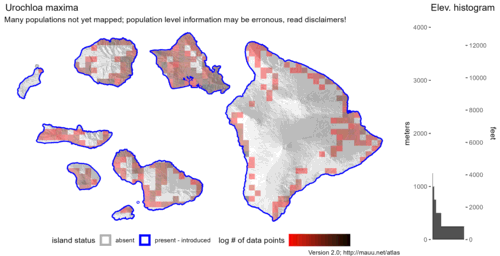

Inflorescence
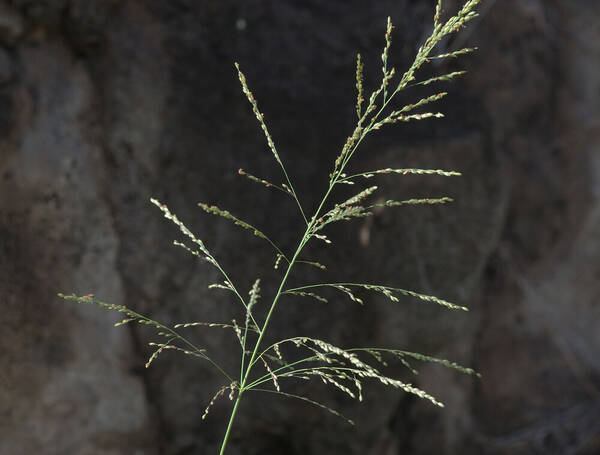
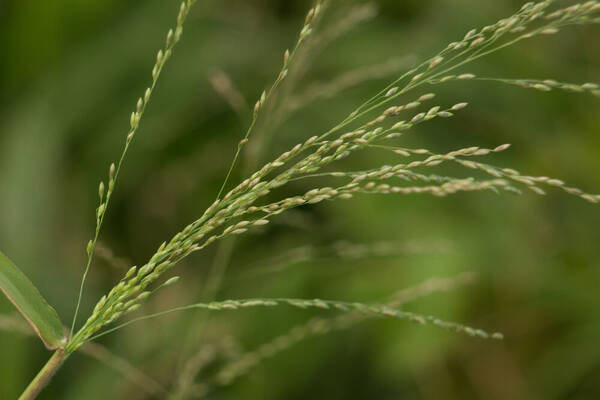
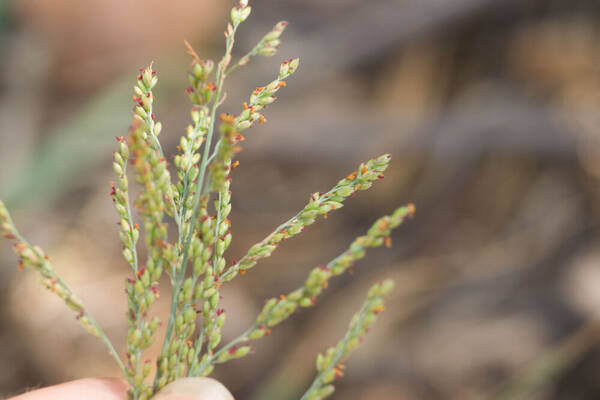
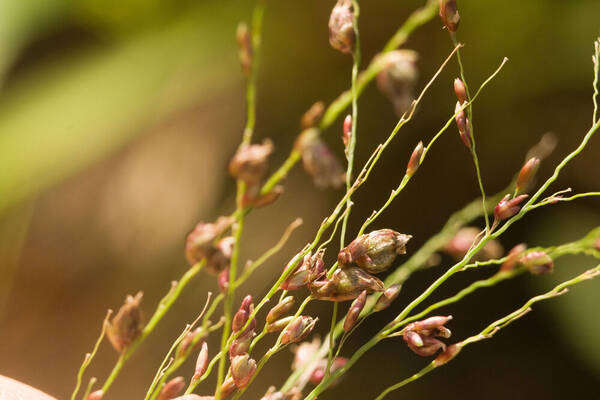
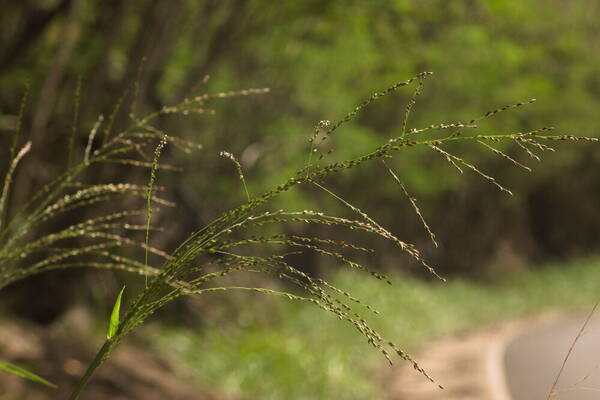
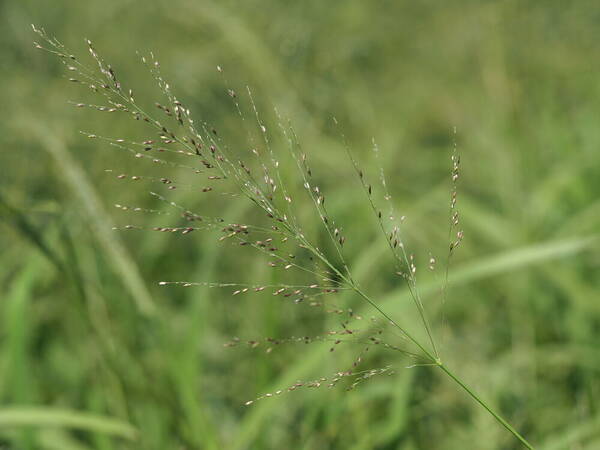
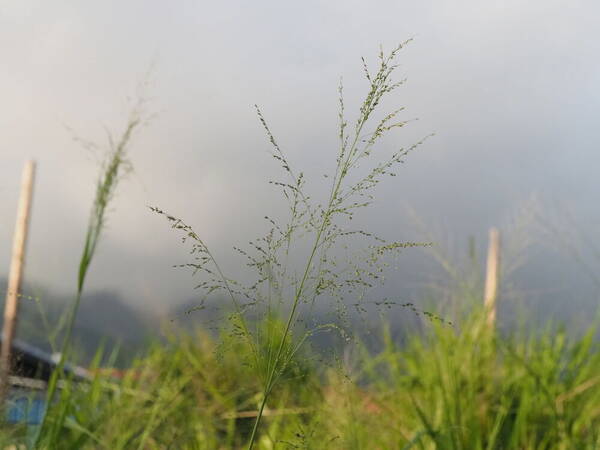
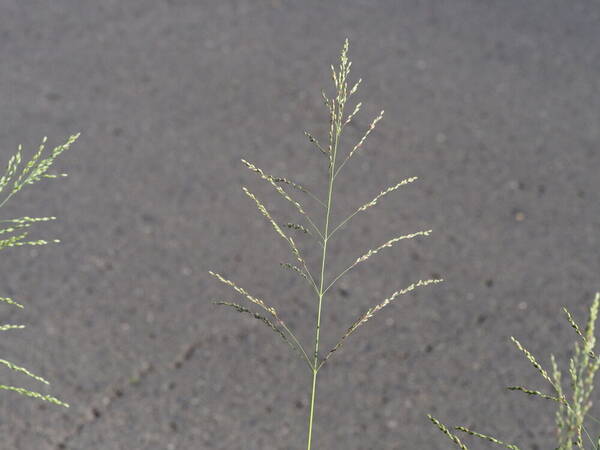
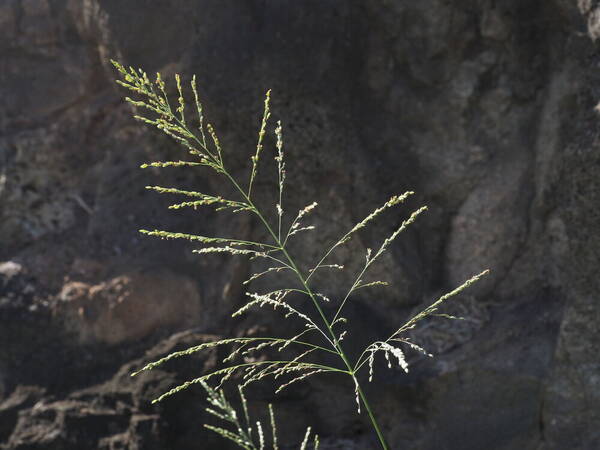
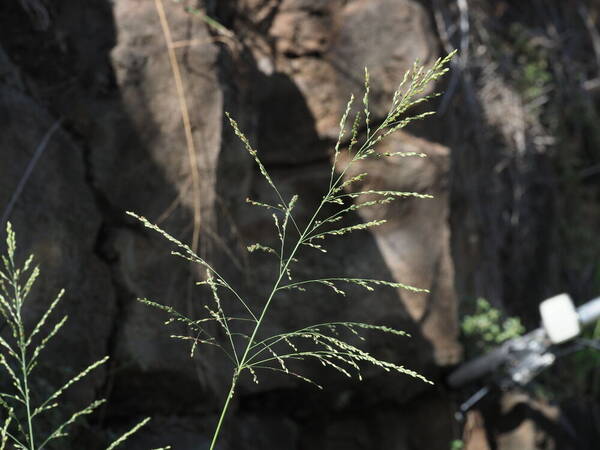
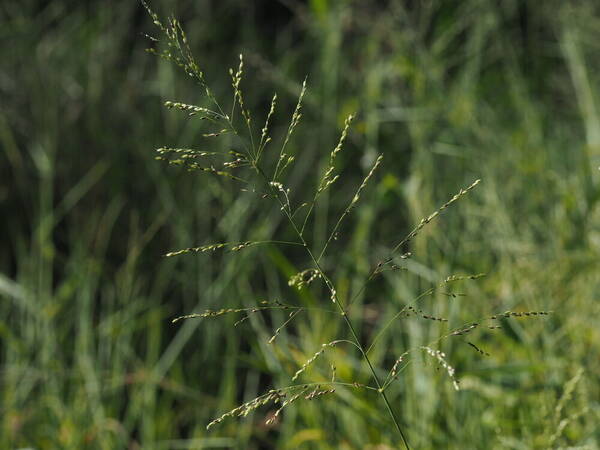
Plant
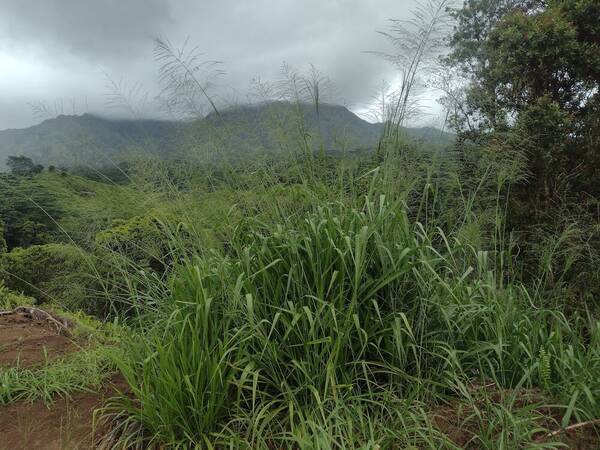
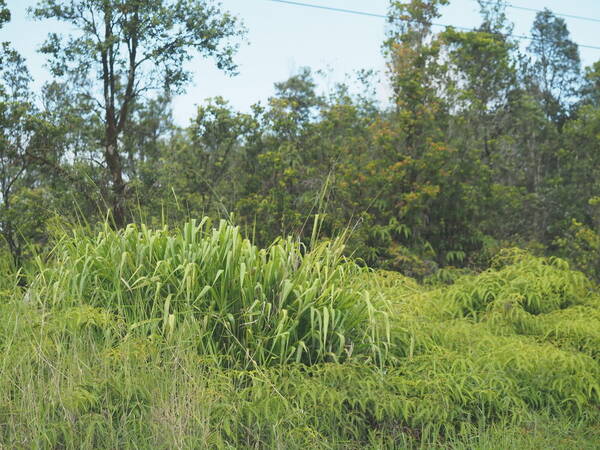
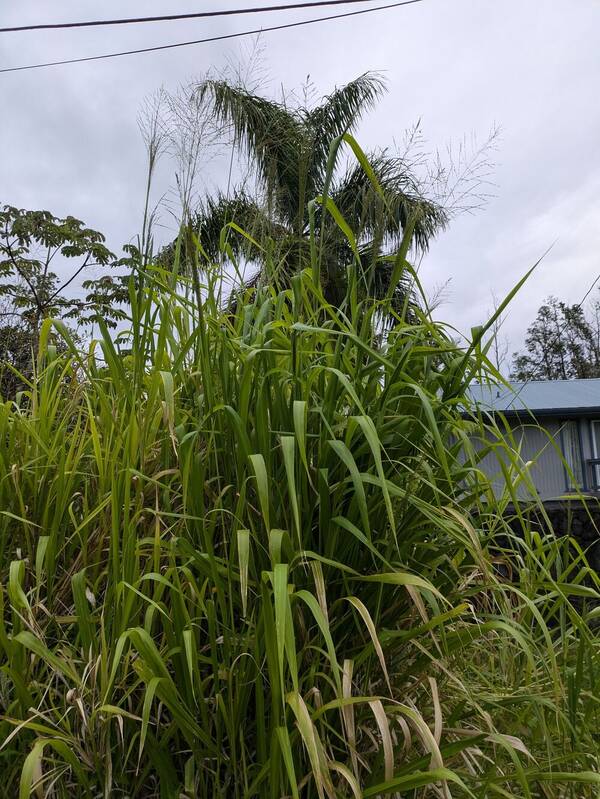
Habit
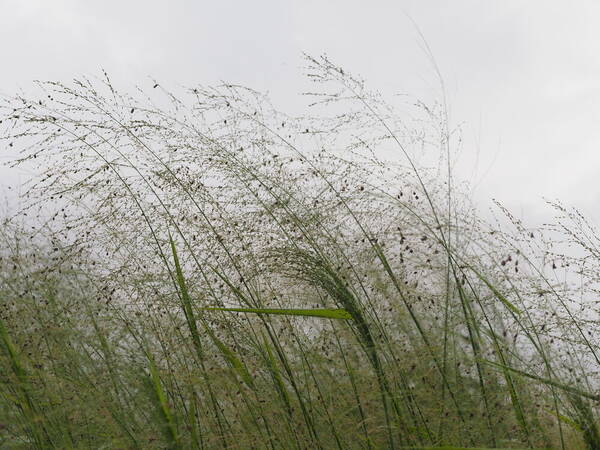
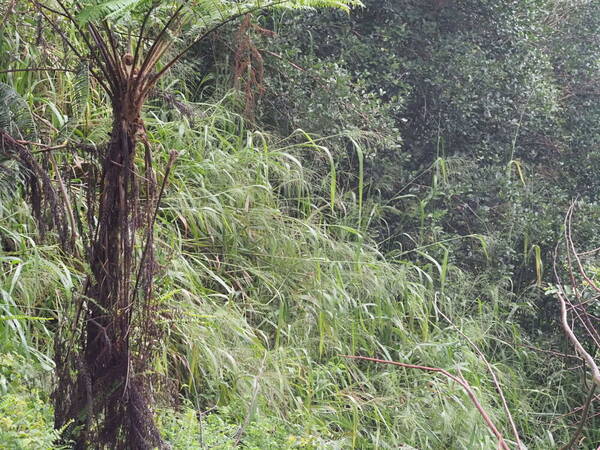
Spikelets
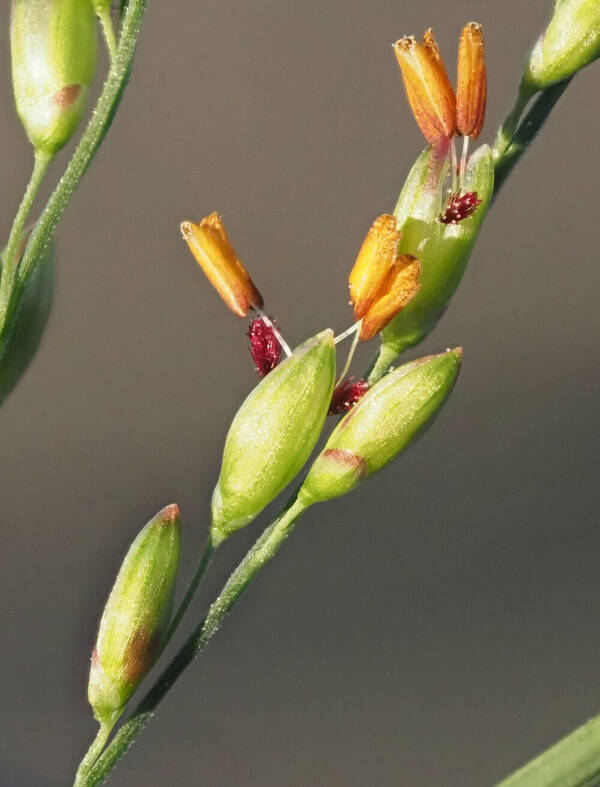
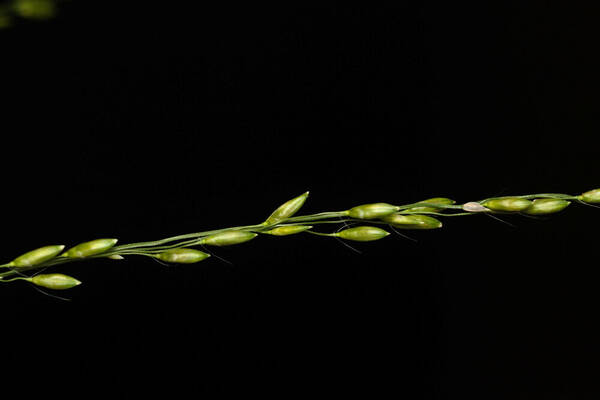
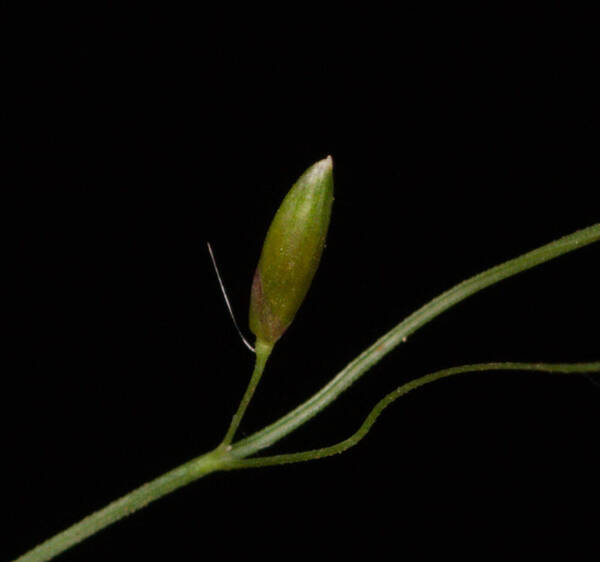
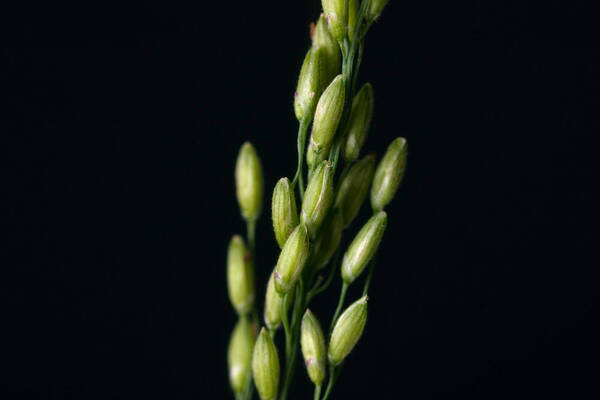
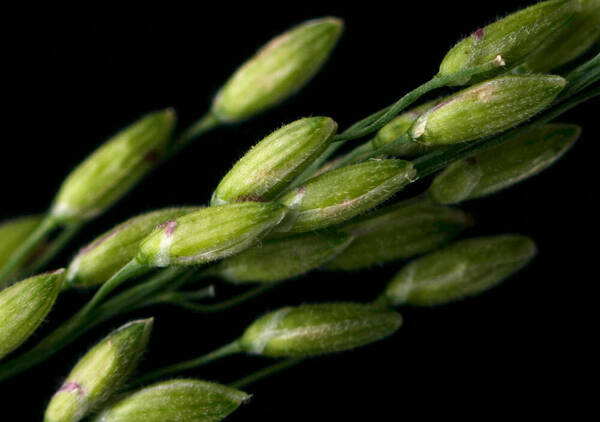
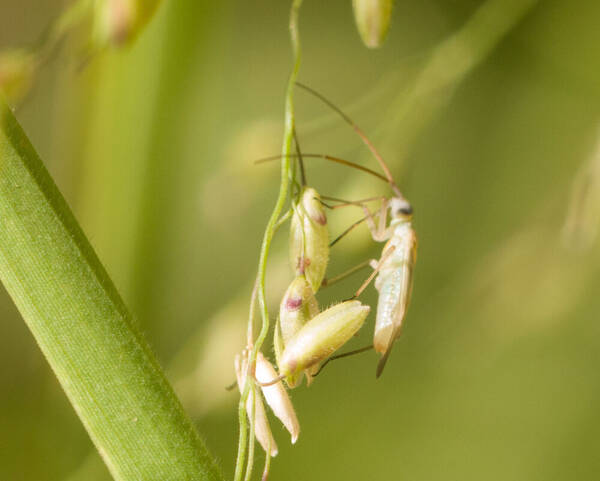
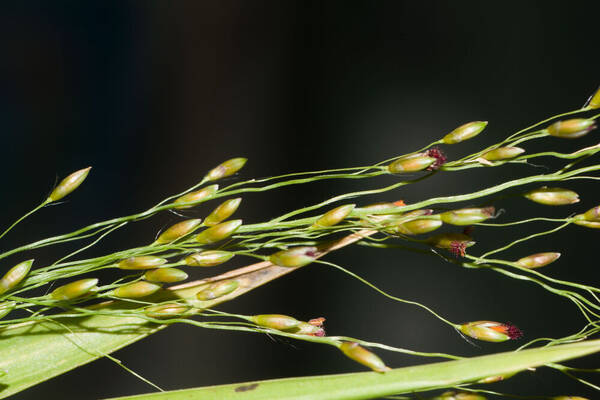
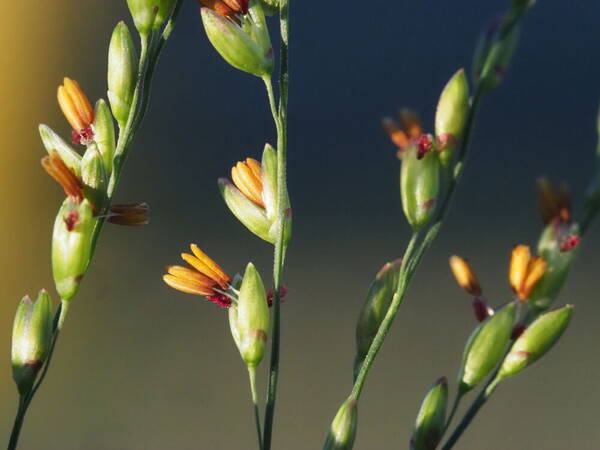
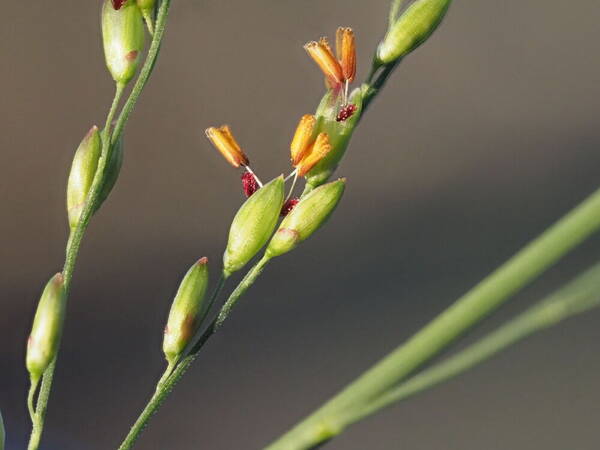
Landscape
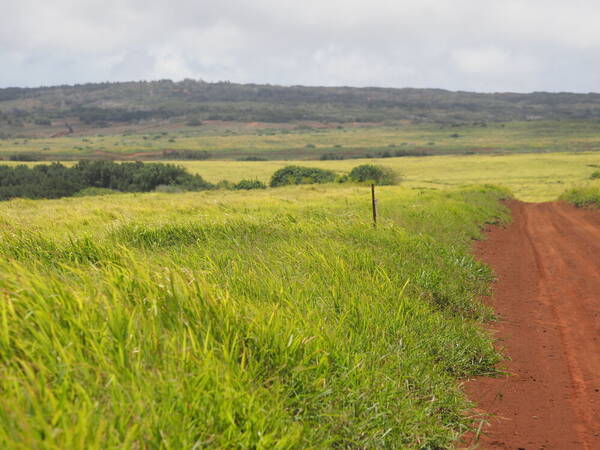
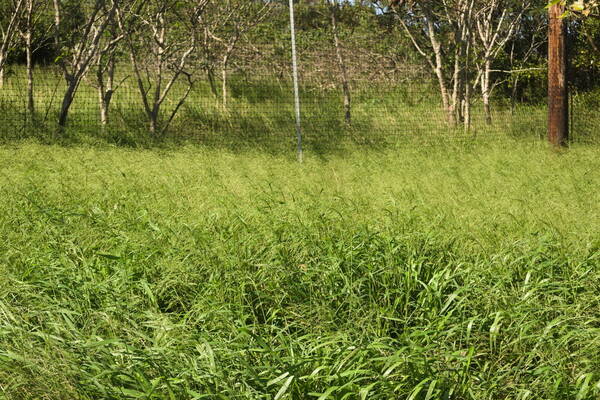
Collar
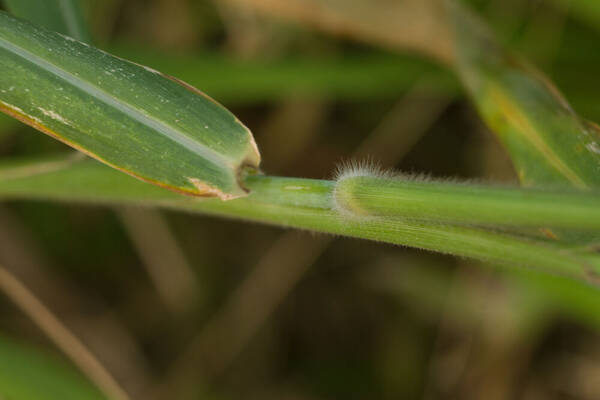
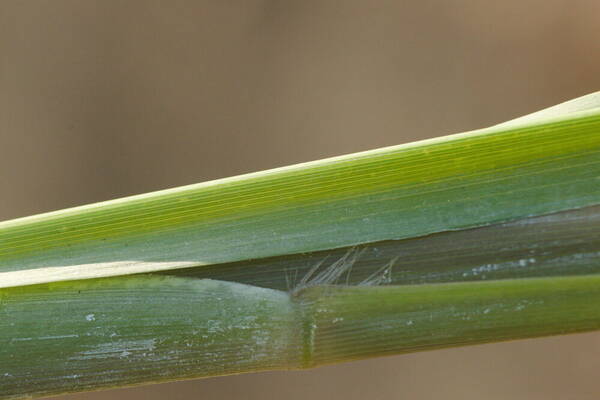
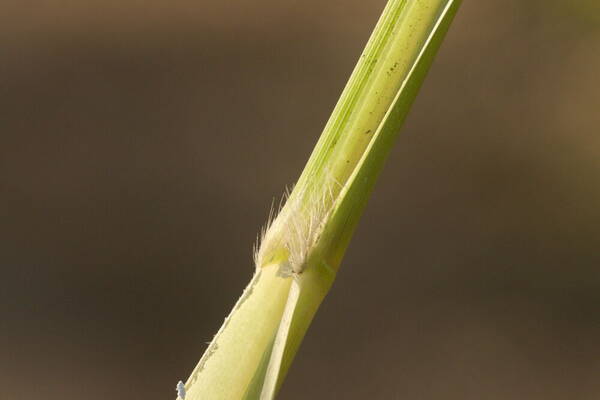
Description
Loosely to densely tufted perennial, occasionally annual; culms (25–)75–200(–450) cm. high, erect from a shortly rhizomatous pubescent base or geniculately ascending and rooting at the lower nodes, slender to robust, branched or simple, glabrous to hispid or pilose, the nodes glabrous or bearded with soft spreading hairs. Leaf-blades linear to narrowly-lanceolate, (6–)12–40(–100) cm. long, (4–)12–35 mm. wide, narrowed or straight at the base, flat, membranous or herbaceous, glabrous or sparsely pilose to pubescent, acuminate. Panicle oblong or pyramidal, 12–45(–60) cm. long, usually much branched, the branches ascending to spreading, the lowest arranged in a whorl; pedicels and secondary branches fine and flexuous to fairly stiff and contracted. Spikelets oblong, (2.5–)3–4.5(–5) mm. long, rounded on the back, glabrous or pubescent, blunt or acute, occasionally overtopped by long hairs from the tip of the pedicel; lower glume broadly ovate, 1/3–1/2 the length of the spikelet, 3-nerved, obtuse or acute; upper glume ovate-oblong, 5-nerved, acute; lower lemma ovate-oblong, 5-nerved, ♂, rarely sterile, its palea well developed; upper lemma and palea conspicuously transversely rugose.
(Description source: Clayton, W.D. & Renvoize, S.A. 1982. Flora of Tropical East Africa. Gramineae (Part 3). A.A. Balkema, Rotterdam. 448 pp. )
Loosely to densely tufted perennial up to 150(–200) cm high, erect from a shortly rhizomatous base or ascending and rooting from the lower nodes; leaves linear to narrowly lanceolate, 12–40 cm x 4–35 mm. Panicle oblong or pyramidal, 12–45 cm long, usually much-branched, the branches ascending to spreading, the lowermost in a whorl. Spikelets oblong, 3–4.5 mm long, glabrous or pubescent, blunt or acute; lower glume broadly ovate, 1/3–1/2 the length of the spikelet, 3-nerved, obtuse or acute; upper lemma conspicuously transversely rugose.
(Description source: Cope, T.A, (1995) Flora Somalia, Vol 4. Royal Botanical Gardens, Kew, London. 312 pp. )
Tufted perennial, occasionally annual, with culms (25)75–200(450) cm. high. Leaf laminae (6)12–40(100) cm. long and (4)12–35 mm. wide, acuminate. Panicle 12–45(60) cm. long, oblong or pyramidal, the lowest branches often arranged in a whorl. Spikelets (2.5)3–4.5(5) mm. long, oblong, glabrous or pubescent, obtuse or acute; inferior glume broadly ovate 1/3–1/2 the length of the spikelet, 3-nerved; superior glume 5-nerved; inferior lemma 5-nerved, male or sterile, its palea well developed; superior lemma and palea conspicuously transversely rugose.
(Description source: Launert, E. & Pope, G.V. (eds.). 1989. Flora Zambesiaca. Volume 10. Part 3. Kew, London. 152 pp. )
Plants perennial; cespitose, with short, thick rhizomes. Culms (60)100-250 cm tall, about 10 mm thick, mostly erect, sometimes geniculate and rooting at the lower nodes; nodes pubescent or glabrous. Sheaths usually shorter than the internodes, glabrous or pubescent, sometimes with papillose-based hairs, margins sometimes ciliate; collars densely pubescent, hairs appressed or divergent; ligules 1-3 mm; blades (15)30-75(100) cm long, 10-35 mm wide, flat, erect or ascending, glabrous or pubescent, sometimes with appressed papillose-based hairs, margins scabrous, sometimes ciliate basally, midveins conspicuous, sunken, whitish. Panicles 20-65 cm, about 1/3 as wide as long, open, rachises smooth or scabrous; primary branches usually more than 20, 12-40 cm, axes 0.4-0.6 mm wide, not winged, ascending, those of the lower node(s) verticillate and pilose at the base, upper axils glabrous, lower branches naked basally; secondary and tertiary branches well-developed; pedicels 0.5-1.5 mm, unequal, straight or curved, glabrous or with a single setaceous hair near the apex. Spikelets 2.7-3.6 mm long, 0.9-1.1 mm wide, oblong-ellipsoid, usually glabrous (rarely densely covered with papillose-based hairs), solitary, paired (or in triplets), usually appressed to the branch axes. Glumes scarcely separate, rachilla between the glumes not pronounced; lower glumes 0.8-1.2 mm, 1-3-veined, obtuse or truncate, glabrous; upper glumes 2.1-3.5 mm, 5-veined, glabrous; lower lemmas 2.1-3.5 mm, subequal, glabrous, 5-veined, without cross venation, acute, muticous or mucronate; lower florets staminate; upper lemmas 1.9-2.4 mm, ellipsoid, pale, glabrous, apices acute, mucronulate; anthers 1.2-2.2 mm. 2n = 18, 32, 36, 44, 48.
(Description source: Barkworth, M.E., Capels, K.M., Long, S. & Piep, M.B. (eds.) 2003. Flora of North America, north of Mexico. Volume 25. Magnoliophyta: Commelinidae (in part): Poaceae, Part 2. Oxford University Press, New York. 783 pp http://floranorthamerica.org/Megathyrsus_maximus )
Robust cespitose perennials 70-300 cm tall, glabrous to hirsute; culms usually unbranched. Ligule a ciliate membrane, 1- 3 mm long; blades 15-90 cm long, 0.6-3 cm wide, flat, glabrous or pubescent, usually densely hirsute behind the ligule. Panicles 9-60 cm long, ovoid, the lowest branches up to 40 cm long and whorled; spikelets 2.7-3.5 mm long, elliptic-obovoid, glabrous or pubescent; first glume 1-1.5 mm long, 1/4-1/2 as long as spikelet, 3-S-nerved, obtuse, second glume 5-nerved, acute; first floret usually staminate, first lemma 5-7- nerved, acute, first palea as long as first lemma; second floret 2-2.8 mm long, acute, transversely rugose; anthers 1.2-1.9 mm long. [2n = 16, 18, 28, 32, 34, 36, 38, 40, 42, 48.]
(Description source: O’Connor, P.J. 1990. Poaceae, pp. 1481–1604. In: Wagner W.L., Herbst D.R. & Sohmer S.H. (eds.)., Manual of the flowering plant of Hawaiʻi. Vol. 2. University of Hawaii Press & Bishop Museum Press, Honolulu )